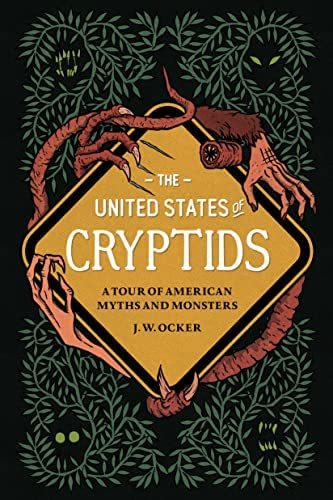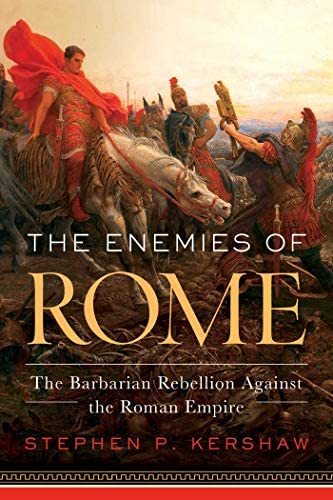#glassical greece
Text
2022 Reading Log, pt 29
My life has been tough lately, so I do what makes me happy. Read books about monsters.

141. The Old Snatchengrabber’s Big Book of Child Eating Monsters by Mike Rosen. This is not beloved British children’s author Mike Rosen, or asshole Republican pundit Mike Rosen. This is a different one. This book is a collection of folkloric bogeymen, illustrated in a cartoony style. Most of these are European, but some from around the world do appear. Some liberties have been taken with the monsters at hand, mostly in the art—the yara-ma-wa-yho, for example, is an amorphous blob instead of a hairless monkey-frog, and Krampus is both female and thicc. Brief, but pleasant.

142. The United States of Cryptids by J. W. Ocker. I’ve quite enjoyed Ocker’s Season of the Witch and Cursed Objects, and I quite enjoyed this book as well. The book is as much about crypto-tourism as it is about actual cryptozoology. As such, it takes a pretty broad view of what a cryptid is, including various UFOlogical entities, as well as folkloric entities like the wendigo or Navajo shapeshifters, if they have places to visit or sell merchandise for. It’s also pretty respectful, acknowledging that those aforementioned Navajo shapeshifters, for example, are taboo to a lot of Navajo people still. Ocker has clearly done his homework, and acknowledges that creatures like the Ozark Howler are modern hoaxes, as well as suggesting some very obscure monsters that are ripe for becoming tourist attractions (such as the Derry Fairy, the Prime Hook Swamp Creature and the Kodiak Dinosaur).

143. The Enemies of Rome by Stephen Kershaw. In some ways, this is the best whirlwind tour of Roman history I could imagine, covering events from the mythical foundation of Rome to the last of the Western emperors. It is most interested in what the Romans thought of the various people they fought and usually defeated, and how Romans built their own identity as separate from “barbarian”, even though they themselves were barbarians from the point of view of Greek culture, which they wholeheartedly appropriated. A lot of time is spent in the late Republic era, which I appreciated. Too often, books about Rome written for a popular audience skip straight from the Punic Wars to Julius Caesar. One thing I didn’t like, however, was its constant use of modern neologisms. “Fake news”, for example, shows up more than five times before I stopped counting. It was cute once, but rapidly became irritating.

144. Flying Snakes and Griffin Claws by Adrienne Mayor. This is a collection of short articles written for various magazines and websites by Mayor, collected and occasionally updated. Most of them are on the subject of weird ephemera of the classical world, often times animal themed. Examples include several articles on tourism in Greece during Roman times, a history of Roman perfumes, the use of weasels as household mousers in the Classical world, and of course writings on Greek and Roman monsters. The book includes her original article proposing that the griffin is based on Protoceratops fossils, and the argument is pretty much just “I went looking for a real animal that looks like a griffin, because I couldn’t imagine that it was a symbolic hybrid, and this is what I found”. In the foreword, she refers to that essay as “embarrassing”, although whether because she has repudiated that (very poorly supported) hypothesis or merely because of its fannish tone addressed to Jack Horner, remains unsaid. I can’t say I recommend this book, but I didn’t consider reading it a complete waste of time.

145. Eaters of the Dead by Kevin J Wetmore Jr. If I could describe this book in one word, it would be “sloppy”. It is a survey of folklore and mythology related to cannibals and man-eating monsters. It seems, at least at first, to be arguing for a hypothesis that all cannibal monsters are embodiments of fears of survival cannibalism, but seems to give up on that thesis half way through. Possibly because the author realizes it’s a non-starter. For example, he claims that ghouls represent a fear of survival cannibalism in the Arabian Desert, before revealing that modern authors consider the corpse-eating and grave-robbing aspect of ghouls to be a Western appropriation in gothic literature, as opposed to an authentic folkloric belief. It also pairs some ideas in very odd ways and acts as if they make sense, like discussing both feeding the dead to vultures (as the Zoroastrians and Tibetans do) and Polyphemus in the Odyssey in the same chapter. It also seems weird to write a book about man-eating monsters, spend an entire chapter on ghouls, but dismiss zombies in two paragraphs. There’s some interesting ideas in here, and some good sources, but I think I would rather read those sources than this book (and in some cases, I have!).
#reading log#monster books#cannibalism#folklore#roman history#classical history#glassical greece#bogeymen#cryptid#cryptozoology
10 notes
·
View notes